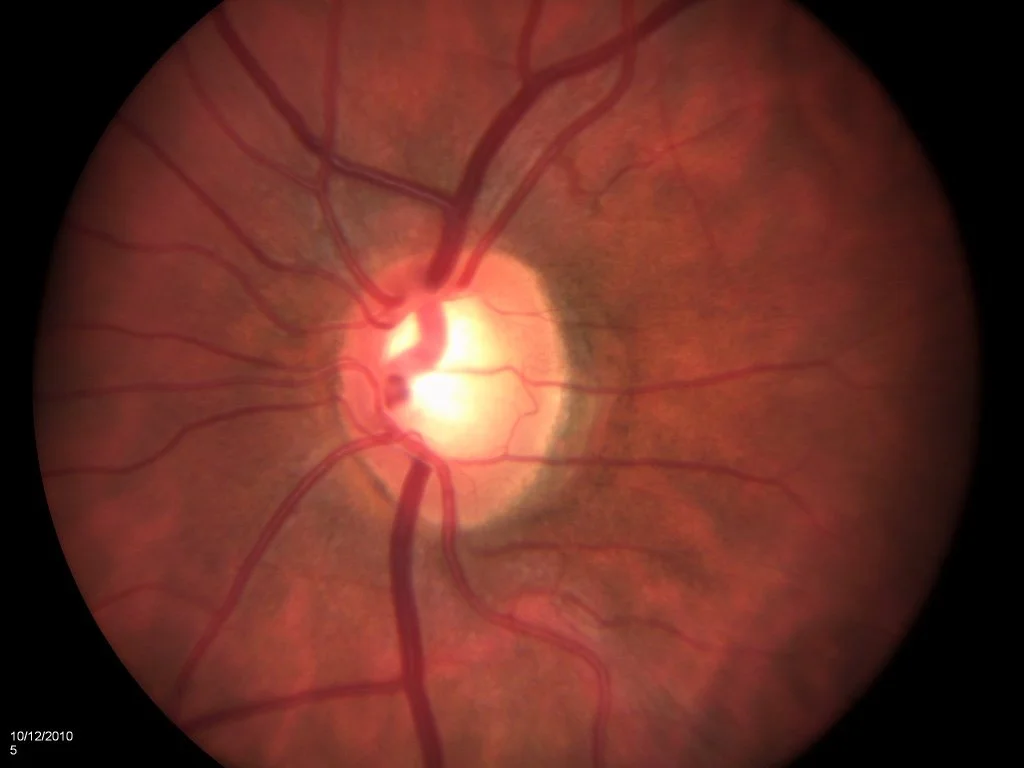Macular Degeneration
Age-Related Macular Degeneration (AMD)
Dry AMD
Dry AMD occurs when the light-sensitive cells in the macula slowly break down, gradually blurring central vision in the affected eye. As dry AMD gets worse, you may see a blurred spot in the center of your vision. Over time, as less of the macula functions, central vision is gradually lost in the affected eye. The most common symptom of dry AMD is slightly blurred central vision. You may have difficulty recognizing faces. You may need more light for reading and other tasks. Dry AMD generally affects both eyes, but vision loss may be more severe in one eye than the other.
During your comprehensive dilated eye exam, your ophthalmologist examines the macula for signs of AMD. In mild cases this may be seen as a mild disturbance in the normal pigment layer which is underneath the macula. In some cases, drusen develop. Drusen are yellow deposits under the retina. They often are found in people over age 60. Drusen alone do not usually cause vision loss. In fact, scientists are unclear about the connection between drusen and AMD. They do know that an increase in the size or number of drusen raises a person’s risk of developing either advanced dry AMD or wet AMD. These changes can cause serious vision loss.
Dry AMD has three stages, all of which may occur in one or both eyes:
Early AMD. People with early AMD have either several small drusen or a few medium-sized drusen. At this stage, there are no symptoms and no vision loss.
Intermediate AMD. People with intermediate AMD have either many medium-sized drusen or one or more large drusen. Some people see a blurred spot in the center of their vision. More light may be needed for reading and other tasks.
Advanced Dry AMD. In addition to drusen, people with advanced dry AMD have a breakdown of light-sensitive cells and supporting tissue in the central retinal area. This breakdown can cause a blurred spot in the center of your vision. Over time, the blurred spot may get bigger and darker, taking more of your central vision. You may have difficulty reading or recognizing faces until they are very close to you.
If you have vision loss from dry AMD in one eye only, you may not notice any changes in your overall vision. With the other eye seeing clearly, you still can drive, read, and see fine details. You may notice changes in your vision only if AMD affects both eyes. Ninety percent of all people with AMD have dry AMD. The cause is not yet known.
Wet AMD
Wet AMD is the more rapidly progressing form of AMD. Generally it occurs in people with prior signs of dry AMD. In wet AMD abnormal blood vessels form behind the retina and start to grow under the macula. These new blood vessels tend to be very fragile and often leak blood and fluid. The blood and fluid separate the macula from its normal position in the back of the eye. With wet AMD, loss of central vision can occur quickly. Wet AMD is less common than dry AMD, but more commonly leads to severe central vision loss. An early symptom of wet AMD is that straight lines appear wavy. If you notice this condition or other changes to your vision, contact your eye care professional immediately.
Risk factors for AMD include a person’s age. Although AMD may occur during middle age, studies show that people over age 60 are clearly at greater risk than other age groups.
Other risk factors include:
Smoking. Smoking may increase the risk of AMD.
Obesity. Research studies suggest a link between obesity and the progression of early and intermediate stage AMD to advanced AMD.
Race. Whites are much more likely to lose vision from AMD than African Americans.
Family history. Those with immediate family members who have AMD are at a higher risk of developing the disease.
Gender. Women appear to be at greater risk than men.
Based on the results of the eye exam, appropriate treatment options will be determined and in certain cases a referral to a fellow retina specialist will be made.




